
Read our 2023 annual report

Knowledge Hub
March 2021 marks the tenth anniversary of the protracted and multifaceted Syrian conflict. But, a decade in, very little about the crisis is simple.
The humanitarian need in the country has also extended to many of the neighboring countries where Syrians are hosted as refugees, including Lebanon, Turkey, and Iraq. With Concern having presence in all four of these countries, we’ve interviewed each of our Country Directors in the region to understand what circumstances are like 10 years on, what life is like for Syrians in each community, the challenges of COVID-19, and the million-dollar question: What will it take for this crisis to end?
Syria (Taimur Ahmed, Country Director)
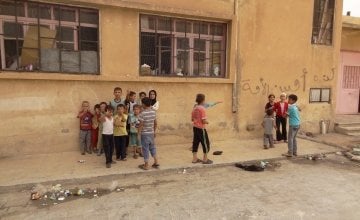
By the numbers
- Humanitarian need: 13.4 million people (out of a total population of 17.5 million)
- Syrians internally displaced: Over 6 million
- Financial need for 2021: $4.2 billion USD
- Poverty rate: Over 80% of Syrians now live below the poverty line; pre-conflict, this figure was as low as 10%
- Food insecurity: 14.2 million
- Education: 2.4 million Syrian children are currently out of school
- Healthcare: Over 12 million Syrians were in need of healthcare support at the beginning of 2020; this number is estimated to be higher in light of Covid-19
- Covid-19: As of February 19, 2021, there were 15,001 total cumulative cases and 987 deaths from Covid-19 in Syria
What are conditions like in March, 2021?
Unfortunately, the situation is still, I would say, really directionless, and in the middle of nowhere. When I say this, it is mainly related to the peace-building efforts. Any kind of political consensus has not materialised, and this high level of uncertainty and unpredictability is not really helping anyone.
For us as a humanitarian organisation, the biggest impact of this is that it is getting more difficult day-by-day to secure more humanitarian funds. Yes, we are a humanitarian organisation providing food, water, medicine, but how long? Donors are simply tired; it’s been 10 years already. But even if the funding has reduced, the needs haven’t reduced.
How has Covid-19 impacted Syria in the last year?
It is unfortunate to say, but if you go and talk to the people in Syria, Covid-19 or even the variant of Covid-20 are maybe the least of their problems. They’re already facing so many issues in life. But Covid-19 is clearly impacting things. For example, NGOs and the UN are the primary investors in local markets in Syria. So, when our funding shrinks, or when we have to stop activities during curfews, that is directly impacting the local market. The people, especially small business owners, their financial situation is getting bad due directly to Covid-19.
What is life like for Syrians still living in-country?
If any Syrian has an opportunity to leave Syria, that’s the first priority. To get into Turkey, Iraq, Lebanon, or Europe using formal or informal means, that would be a gift. They don’t see their future, their childrens’ future, in the area. For the people in northwest Syria, it’s a small area where millions of people are living, often being displaced multiple times. So, they are living with this mindset that, at any time, they can be called to move again. They’re all sitting with their bags packed, so to speak.
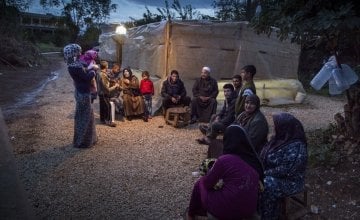
What lies ahead for the next year?
There was a survey from two months ago with the 20 international NGOs inside Syria, and it mentioned a funding decrease of $52 million this year alone. But even if you don’t see big news stories, the conflict is still there; the need is still there. Funding is shrinking; uncertainty is increasing.
What will it take for this crisis to be over?
There’s no clear direction about the political solution. Until we have a political solution, there is no way to have peace or stability.
Lebanon (Anita Shah, Country Director)
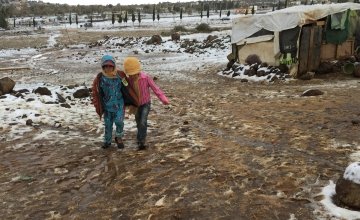
By the numbers
- Humanitarian need: Over 3.4 million
- Syrians hosted: 1.5 million
- Financial need for 2021: $2.67 billion USD
- Poverty: 55% of Lebanese and 90% of Syrian refugees in Lebanon are living below the poverty line
- Food Insecurity: Over 4 million Lebanese and nearly 1.2 million Syrian refugees in Lebanon
Covid-19: As of February 19, 2021, there were 346,063 total cumulative cases and 4,152 deaths from Covid-19 in Lebanon
What are conditions like in March, 2021?
The context in Lebanon is incredibly challenging: We have a situation where the Covid-19 pandemic is associated with stringent lockdown restrictions and a very fragile health system. This, plus the Beirut port explosion; the economic crisis, currency devaluation, and associated high inflation; and massive vulnerability among Lebanese populations coupled with the protection needs of Syrian refugees and migrant workers has created a very complex and challenging environment in which to operate.
How has Covid-19 impacted Lebanon in the last year?
Vulnerabilities are increasing. Resources are limited in terms of donor support. Access is incredibly challenging, too — not only due to Covid restrictions but also to national riots and roadblocks. A lot of our team are also being impacted by Covid themselves, and once one is infected, obviously it goes over a whole range of close contacts, and then an entire team is out of action for a couple of weeks. So, you have major difficulties and challenges in terms of delivering our interventions. It’s a very, very complex operating environment, and very, very uncertain.

What is life like for Syrian refugees in Lebanon?
Lebanon has the highest per capita refugee population in the world. At a time when Lebanon is so stretched in terms of its own resources, being a host is very difficult. This results in tensions, of course, and we’ve seen an increase in evictions and tensions between the host community and Syrian refugees, and increasing anti-Syrian sentiment. In terms of vulnerable Syrians, protection has to be the greatest priority. This includes child protection, protection from gender-based violence, psychosocial support, shelter assistance and making sure that they have access to water and sanitation within the shelters.
What lies ahead for the next year?
It’s extremely difficult to predict what is going to happen in the next year, because the situation is so rapidly changing. There’s a lot of information on which to make decisions, and so we're just reacting to what we’re observing as it unfolds on the ground. In the best case scenario, we will have a government and we will have an improvement in the economic situation and international assistance will continue to flow in. We will be able to continue doing the work that we are currently doing — and perhaps more of it.
In the worst case scenario, the country will disintegrate further, and that is obviously a scenario that nobody wants to see unfold. We need to really be supportive and not thinking of Syrian refugees or vulnerable Lebanese as separate: We just need to be thinking of vulnerable populations on the whole in Lebanon, throughout the country. The greatest support that we have been providing and should continue to provide is support to small and medium enterprises, because they employ a large proportion of the population. Keeping them afloat will ensure that they are not only able to survive, but also that they won’t need to lay off more workers and can continue to sustain the economy.
What will it take for the crisis to be over, especially in terms of its effects on Lebanon?
That’s a million-dollar question. As we all know, this goes beyond Syria and Lebanon; it’s about international powers and how they think and influence what goes on in these two countries. So unless we see real shifts in international politics, we are not going to see any change on the ground in both of these countries, sadly.
We can’t ignore the Lebanese host populations now, because they are becoming just as vulnerable as Syrian refugees. There should be a spotlight on Syrian refugees, but also equal support to the host community. Otherwise, tensions are just going to escalate even further.
Turkey (Arshad Muhammad, Country Director)
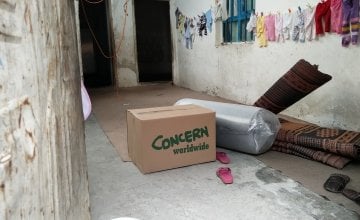
By the numbers
- Syrians hosted: 3.6 million
- Financial need for 2021: $1.174 billion USD
- Poverty rate: 76% of Syrian refugees in Turkey are living below the poverty line; this number is pre-pandemic and expected to have increased since then
- Covid-19: As of February 19, 2021, there were over 2.6 million total cumulative cases and 27,738 deaths from Covid-19 in Turkey
What are conditions like in March, 2021?
In Turkey, the good thing is that the government has been very responsive, hosting the largest number of refugees anywhere in the world. Syrian refugees here are referred to as being “Syrians under temporary protection” by the Turkish government, so they are at least living with safety — physical safety. We work with the most vulnerable Syrian refugees, and for them I would say they are still at the bare-minimum survival conditions.
Tented communities are no longer a way of living for Syrians in Turkey, most are living in host communities now. The world’s largest cash support program with EU funding is continuing for vulnerable families, which is very family-sensitive: the larger the family, the higher the monthly cash grants. Education and health services are continuing, which I also see as a very big plus. Syrians pay for their children’s school uniforms and supplies.
How has Covid-19 impacted Turkey in the last year?
The main challenge here, as around the globe, is Covid-19, which has imposed limitations on health and education services — not just for refugees, but for everyone. Hospitals are at capacity with Covid patients. Working hours, social distancing, and the language challenges have all increased limitations for Syrian refugees. But there are also continued efforts from the Department of Education and other humanitarian actors to increase the enrollment of Syrian children in Turkish schools.
At an overall broader level, I think livelihoods are the biggest challenge for vulnerable families right now; to have a decent, dignified income with more and more families not able to meet all their basic needs. So livelihoods have become an even bigger challenge after Covid when several of the informal opportunities for the livelihoods of refugees have closed or stopped.
What is life like for Syrian refugees in Turkey?
Wherever refugees go, there is an additional burden placed on the host community and infrastructure. A few years ago there were small conflicts here and there between refugees and host communities, but for the last year or so there haven’t been any major reports. There has been a government effort to absorb the additional load on public services with EU funding and resources; and organizations like Concern are increasingly working with host communities as well as refugee populations to make sure they get enough support.
There are also the challenges of livelihoods and education, and they’re both related, especially with regards to child labor. And all of these challenges come at a higher proportion for women and girls.
What lies ahead for the next year?
I don't see any major change happening to our work in Turkey. Our work will continue in all three sectors of protection, education, and livelihoods. Funding has reduced over the last few years, but Turkey is receiving generous support from the EU which will continue through the middle of 2022. One key area in addition to livelihoods is education: Presently, not all refugee children are in school. Some have problems with access, some have financial challenges. Some are in child labour, which we are also working to fight with education facilities and stipends.
What will it take for the crisis to be over, especially in terms of its effects on Turkey?
For people to voluntarily return, there needs to be safety, security, basic needs like roads and water and sanitation infrastructure, and livelihoods. That’s the ideal situation, and the difficult question is when this all would happen. The best possibility at the moment, the one everyone is looking at, is when the multi-stakeholder Constitutional Conference happens.
Iraq (Taimur Ahmed, Country Director)
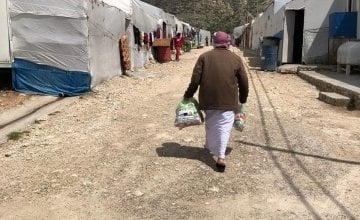
By the numbers
- Humanitarian need: 4.1 million
- Syrians hosted: 250,000
- Poverty: 22.5% of Iraqi live below the poverty line. While there are no recent statistics for Syrian refugees in Iraq, the documented challenges they face obtaining employment mean that they experience a much higher poverty rate.
- Covid-19: As of February 19, 2021, there were 653,557 total cumulative cases and 13,204 deaths from Covid-19 in Iraq
What are conditions like in March, 2021?
The Iraqi-Kurdistan region has been historically open to supporting northern Syria because of the Kurdish affiliation, so that’s where a lot of NGOs, including Concern, came to establish our operational base. When the 2017 economic crisis happened in Iraq, this had an impact in the area, and we’ve been working since to help those living in this region. The conflict and post conflict needs of Iraqi populations continues, in particular, for the vulnerable populations living in 21 IDP (internally displaced people) camps where a majority are the Yazidi population. Similarly, here are also two refugee camps where 120,000 Syrian refugees are living.
How has Covid-19 impacted Iraq in the last year?
Now we have the third wave, which is the UK variant, and the deaths are at more than 3,000 people. What happened in the beginning, Iraq decided to go into lock down. Due to this, for several months, factories were closed, businesses were closed. Then people started coming out and protesting, because they had been sitting in their homes without work for four or five months. So this all contributed to the economic crisis — the Iraqi currency was devalued up to 25% recently.
What is life like for Syrian refugees in Iraq?
A major challenge is political instability. Elections are scheduled for late this year. There is a risk that they may not go well leaving the country more vulnerable to an emergency. Insecurity also continues to be a big challenge.
What lies ahead for the next year?
In addition to political stability and protection, the biggest challenge I still see for us for the next year will be finding donors. Since 2003, donors have been supporting Iraq, but now, again, they are tired. In Iraq, it is really hard to get funding of $100,000. This means not being able to provide water and even the most basic of facilities to the very vulnerable populations living in camps.
What will it take for the crisis to be over, especially in terms of its effects on Iraq?
This is not only about the current challenges, this is about generations. Just imagine for the last 10 years, how many children were out of school? How many children were in child labor, or abused, how many were radicalized or manipulated? The question isn’t about survival only, it’s about these generations being able to heal and build their lives for the next 20, 30 years.
Other ways to help
Corporate support
Is your company interested in working together for a common cause?
Fundraise for Concern
From mountain trekking to marathon running, cake sales to table quizzes, there are lots of ways you can support our work.
Buy a gift
With an extensive range of alternative gifts, we have something to suit everybody.
Leave a gift in your will
Leave the world a better place with a life-changing legacy.
Volunteer with Concern
The lots of ways to get involved with our work as a volunteer
School fundraising
Without the generous support from schools, we wouldn't be able to do the work that we do.




